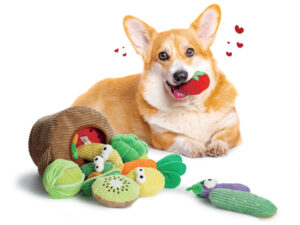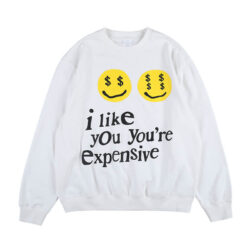In the intricate tapestry of tattoo artistry, the importance of shading needles cannot be overstated. These specialized tattoo needles play a pivotal role in creating depth, dimension, and nuanced effects in tattoos. In this comprehensive guide, we delve into the realm of shading needles, exploring their types, techniques, and the crucial role they play in elevating the art of tattooing.
I. Understanding Shading Needles: Shading needles are a distinct category of tattoo needles designed specifically for creating gradients, shadows, and smooth transitions in tattoo artwork. Unlike outlining needles that emphasize precision, shading needles focus on achieving various tones and textures to bring a tattoo design to life.
II. Types of Shading Needles: Shading needles come in different configurations to cater to the diverse artistic preferences of tattoo artists. The primary types of shading needles include:
-
Round Shader (RS): Round shader needles feature a circular arrangement of needles in a slightly spaced-out configuration. These needles are versatile and commonly used for shading larger areas, creating soft gradients, and blending colors seamlessly.
-
Magnum Shader (M1): Magnum shader needles, also known as magnum or soft mag needles, have a flat configuration with multiple needles arranged in rows. This design allows for broader coverage, making magnum shaders ideal for shading and blending in larger areas of a tattoo.
-
Curved Magnum (CM): Curved magnum needles share similarities with magnum shaders but have a slight curve in their configuration. The curved shape follows the natural contours of the body, making them suitable for shading in areas with curves and contours.
III. Techniques for Using Shading Needles: Achieving impeccable shading in a tattoo requires skillful techniques and an understanding of how to manipulate shading needles effectively. Some key shading techniques include:
-
Layering: Layering involves building up layers of ink gradually to create depth and dimension. By varying the intensity of the shading and layering multiple passes, artists can achieve realistic shadows and highlights in their designs.
-
Circular Shading: Circular shading involves moving the shading needle in circular motions to create a soft and diffused effect. This technique is commonly used for shading larger areas and achieving a smooth transition between light and dark tones.
-
Whip Shading: Whip shading, also known as flicking or stippling, involves using quick and controlled motions to create a textured or stippled effect. This technique is often employed for creating texture in tattoos, such as fur or rough surfaces.
IV. Importance of Shading Needles in Tattoo Artistry: Shading needles play a crucial role in enhancing the visual impact of a tattoo. Their significance lies in the following key aspects:
-
Depth and Dimension: Shading needles are instrumental in adding depth and dimension to a tattoo design. By creating gradients and varying tones, artists can make certain elements of the tattoo appear recessed or prominent, giving the artwork a three-dimensional quality.
-
Realism and Texture: For tattoos aiming for a realistic or textured appearance, shading needles are indispensable. These needles allow artists to replicate the nuances of light and shadow, as well as create intricate textures that bring the tattoo to life.
-
Smooth Transitions: Achieving smooth transitions between different elements of a tattoo is a hallmark of skilled shading. Shading needles enable artists to seamlessly blend colors and tones, ensuring that the transitions appear natural and visually appealing.
-
Artistic Expression: Shading needles provide artists with a versatile tool for expressing their artistic vision. Whether creating bold and contrasting shadows or subtle gradients, shading needles empower artists to convey mood, emotion, and style in their work.
V. Selecting the Right Shading Needles: Choosing the right shading needles is essential for achieving the desired shading effects in a tattoo. Considerations for selecting shading needles include:
-
Needle Configuration: Different needle configurations cater to specific shading styles. Round shader needles are ideal for soft shading and blending, while magnum shaders provide broader coverage for more pronounced gradients. Understanding the desired shading effect helps in selecting the appropriate needle configuration.
-
Needle Gauge: The thickness of the needle, or gauge, influences the impact on the skin and the overall appearance of the shading. Thicker needles (lower gauge) may be suitable for bolder shading, while thinner needles (higher gauge) offer precision for delicate shading work.
-
Machine Compatibility: Ensuring that the selected shading needles are compatible with the artist’s tattoo machine is crucial. Different machines may have specific requirements for needle types and configurations, and compatibility ensures optimal performance during the tattooing process.
-
Quality and Sterilization: Quality and sterilization are paramount when selecting shading needles. High-quality materials and thorough sterilization processes ensure the safety of both the artist and the client. Opting for shading needles from reputable suppliers with a commitment to quality is essential.
VI. Caring for Shading Needles: Proper care and maintenance of shading needles contribute to their longevity and performance. Key tips for caring for shading needles include:
-
Sterilization: Before each use, shading needles must undergo thorough sterilization. Autoclaving or using single-use, pre-sterilized needles ensures that the needles are free from contaminants and reduces the risk of infections.
-
Inspection: Artists should inspect shading needles before use to ensure they are free from any defects or damage. Bent or damaged needles can compromise the quality of the shading and may cause discomfort to the client.
-
Disposal: Single-use needles should be disposed of properly after each tattoo session. Reusing needles is not only unhygienic but also risks compromising the quality of the shading and the safety of the client.
VII. Future Trends in Shading Needle Technology: As the tattoo industry continues to evolve, advancements in needle technology may influence the future of shading needles. Anticipated trends include innovations in needle materials, coatings, and designs aimed at enhancing precision, reducing trauma to the skin, and allowing for more intricate shading effects.
VIII. Conclusion: Shading needles stand as indispensable tools in the arsenal of a tattoo artist, allowing for the creation of depth, dimension, and artistic expression in tattoo designs. Understanding the types, techniques, and considerations for selecting shading needles empowers artists to master the craft of shading and elevate their tattooing skills.
In the dynamic world of tattoo artistry, where every stroke contributes to the narrative of a tattoo, shading needles are the storytellers, bringing life and emotion to the canvas of skin. As artists continue to push the boundaries of creativity, the journey of shading needles remains an integral part of the evolving art form of tattooing.






